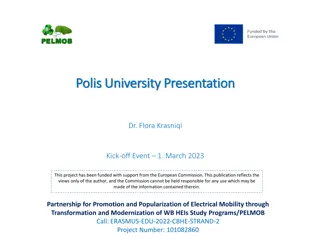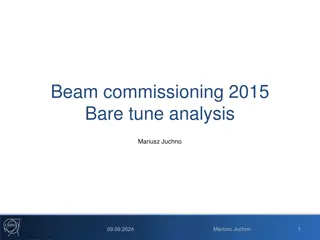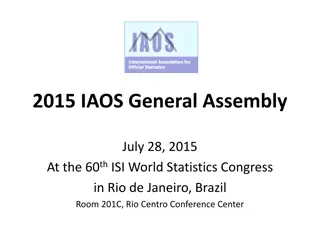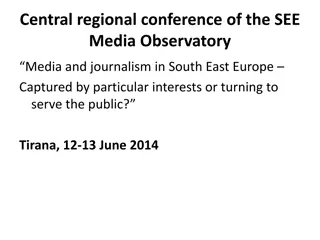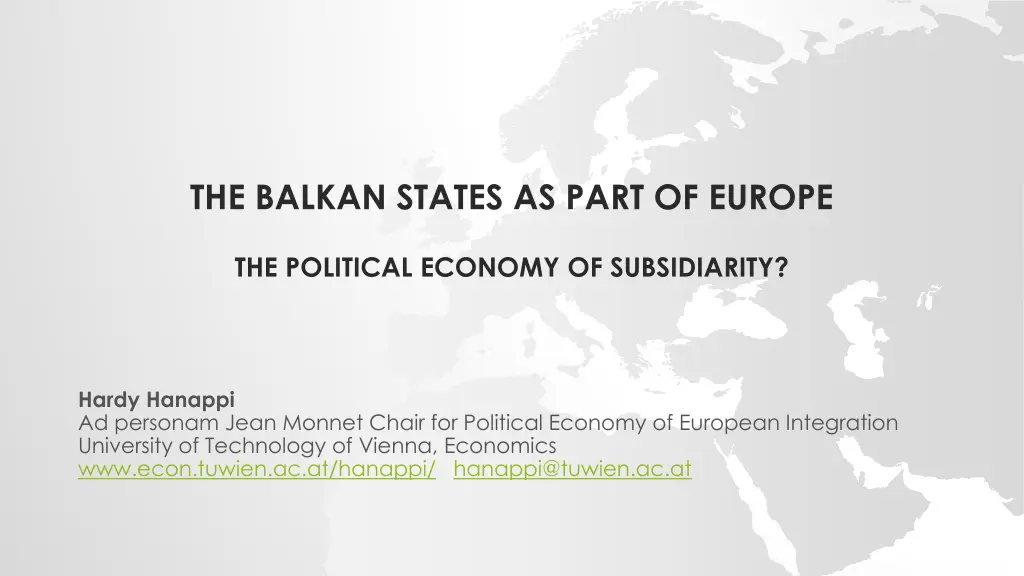
Balkan States in Europe: Political Economy of Subsidiarity
"Explore the political economy of the Balkan states within the context of European integration, addressing theories from subsidiarity to network design. Delve into the challenges, motivations, and current state of European unification, focusing on the South-East region. Learn about the integration of countries like Turkey, Greece, and others in NATO and the EU, examining economic and political aspects."
Download Presentation

Please find below an Image/Link to download the presentation.
The content on the website is provided AS IS for your information and personal use only. It may not be sold, licensed, or shared on other websites without obtaining consent from the author. If you encounter any issues during the download, it is possible that the publisher has removed the file from their server.
You are allowed to download the files provided on this website for personal or commercial use, subject to the condition that they are used lawfully. All files are the property of their respective owners.
The content on the website is provided AS IS for your information and personal use only. It may not be sold, licensed, or shared on other websites without obtaining consent from the author.
E N D
Presentation Transcript
THE BALKAN STATES AS PART OF EUROPE THE POLITICAL ECONOMY OF SUBSIDIARITY? Hardy Hanappi Ad personam Jean Monnet Chair for Political Economy of European Integration University of Technology of Vienna, Economics www.econ.tuwien.ac.at/hanappi/ hanappi@tuwien.ac.at
OVERVIEW Motivation The current state of the European unification process Integration of Europe s South-East Theory: From subsidiarity to network design Practice: Europe s problems implications for Balkan states
MOTIVATION European Studies provide a large amount of interesting material and case studies but theory (and practice) synthesising them is rare. Mainstream economic theory is using an interesting mathematical apparatus but it is in most cases not applicable to political economy. Europe s South-East is a pivotal element in the unification dynamics but scientific approaches to model the dynamics of its political economy are missing.
THE CURRENT STATE OF THE EUROPEAN UNIFICATION PROCESS - 1 REAL GDP UNEMPLOYMENT GDP (constant 1990 GK $) Unemployment Rate in the EU 1990 International Geary Khamis Dollars (for 8000000 200000 18 1990 International Geary Khamis Dollars (for 180000 7000000 16 160000 6000000 14 140000 5000000 120000 12 Depression 12 countries) 4000000 100000 Greece) Great percent 10 WW 2 native born 80000 WW 1 3000000 8 foreign born 60000 2000000 40000 6 1000000 20000 4 0 0 1900 1908 1916 1924 1932 1940 1948 1956 1964 1972 1980 1988 1996 2004 2012 2 0 12 European Countries Greece 2007 2008 2009 2010 2011 2012
THE CURRENT STATE OF THE EUROPEAN UNIFICATION PROCESS - 2 NATO EXPANSION GOVERNMENT DEBT Government Gross Debt 2500 14000 12000 2000 10000 1500 8000 Italy bill. Euro France 6000 Germany 1000 EU 4000 500 2000 0 0 2006 2007 2008 2009 2010 2011 2012 2013 2014
INTEGRATION OF EUROPES SOUTH-EAST Turkey and Greece become NATO members Greece becomes EU member state in 1981 Balkan War After 2004 in EU: Slovenia, Cyprus, Bulgaria, Romania, Croatia Slovenia, Greece, and Cyprus are in the Eurozone Economic Integration ? (Input-Output Analysis, etc.) Political Integration ?
FROM SUBSIDIARITY TO NETWORK DESIGN - 1 Subsidiarity Decision 1 Decision 2 Entity 1 Decision 3 Decision 4 Decision 5 Entity 3 Entity 2 Decisions are only transferred to higher level entities if they cannot be (better) performed at the lower level. Decision 1 Decision 1 Decision 2 Decision 2 Decision 3 Decision 3 Decision 4 Decision 4 Decision 5 Decision 5
FROM SUBSIDIARITY TO NETWORK DESIGN - 2 Problems with the Subsidiarity Principle in Political Economy 1. Two different types of entities: Firms: maximize profit, capital accumulation (growth) side constraint: reproduction Political units: stabilize reproduction, welfare growth side constraint: finance (including feasible debt) 2. Time horizons of feedback loops: Firms: Innovation-banking-competion-cooperation-demand Political units: Election cycles 3. Transnational Corporations versus local SMEs: Political Counterpart of TNCs? Political units as mediators between TNCs and SMEs?
FROM SUBSIDIARITY TO NETWORK DESIGN - 3 Network design Internal Model Decision 1 Decisions become transitory negotiation results, agreed upon by agents with internal model-building. Decision 2 Entity 1 Decision 3 Decision 4 Entity 3 Entity 2 Decision 5 Decision 1 Decision 1 Decision 2 Decision 2 Network (re-)design is supported by agent-based simulation in evolutionary political economy approaches. Decision 3 Decision 3 Decision 4 Decision 4 Decision 5 Decision 5
EUROPES PROBLEMS: IMPLICATIONS FOR BALKAN STATES Unemployment Restructuring of economic activities, flexible labor organization, more public employees Capital Accumulation ( no growth ) Infrastructure investments (EIB), labor time reduction, qualitative growth, growth of leisure time War Control of weapons trade, priority of economic cooperation over military fostered competition Immigration Prepare for many immigrants, EU: fostering growth in North Africa and peace in the Middle East Environmental Limits Local media campaigns, support the global task
THANK YOU FOR YOUR ATTENTION Free downloads of book chapters and research papers at: www.econ.tuwien.ac.at/hanappi/publications.html




